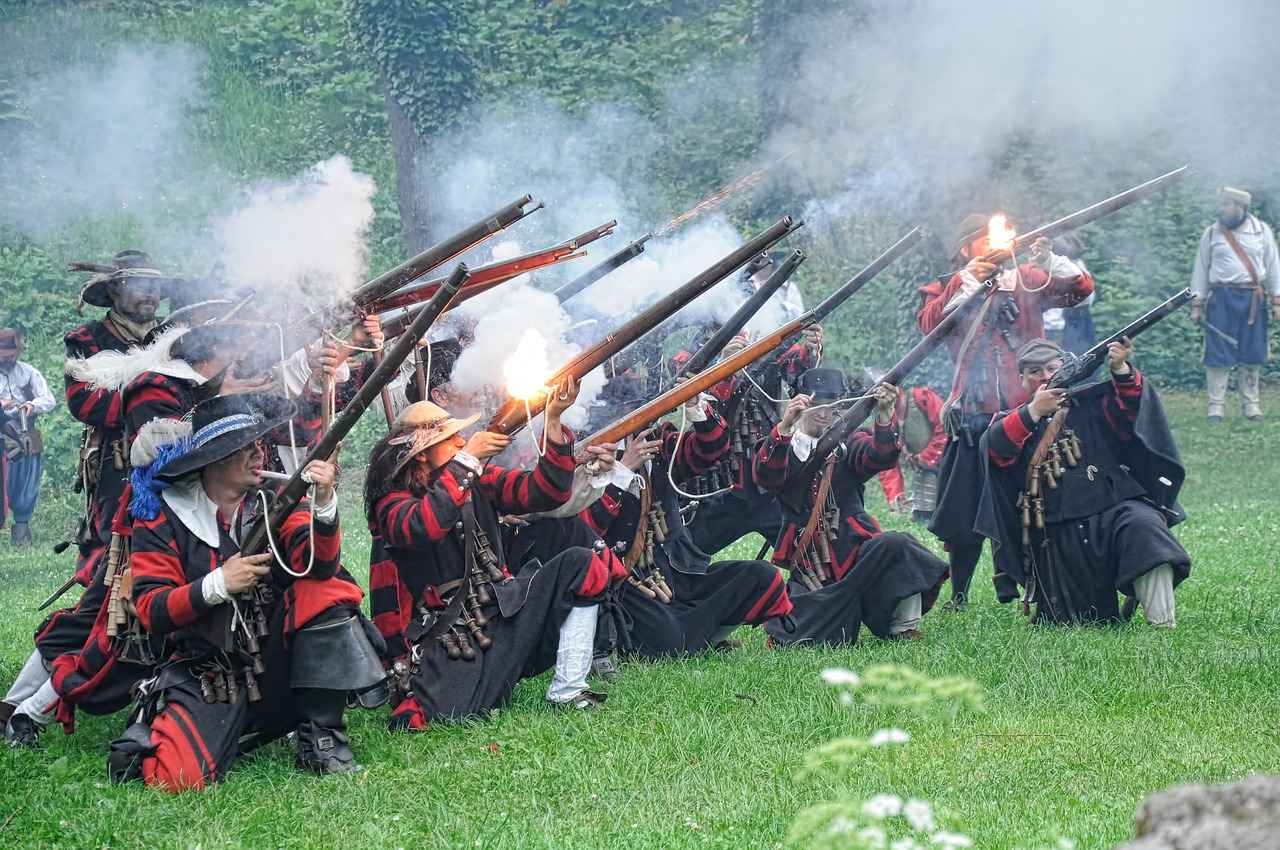Welcome to the captivating realm of Fletchling, a delightful Normal/Flying-type Pokémon that has won the hearts of trainers worldwide. In this article, we will explore Fletchling’s evolution, optimal moveset, and effective battle strategies, enabling you to harness its full potential in your gameplay.
Understanding Fletchling: Overview and Characteristics
Fletchling is known for its charming appearance and unique abilities. As a dual-type Pokémon, it possesses strengths in speed and agility, making it a formidable contender in battles. However, it also has weaknesses, particularly against Rock and Electric-type moves, which trainers must consider when strategizing.
Fletchling Evolution: From Fletchling to Talonflame
Fletchling evolves into Fletchinder at level 17, and subsequently into Talonflame at level 35. Each evolution enhances its stats and moveset, making it crucial for trainers to understand this progression. Fletchinder, for instance, gains access to more powerful flying-type moves, while Talonflame boasts impressive speed and attack stats.
Best Moveset for Fletchling: Optimal Strategies
To maximize Fletchling’s effectiveness in battles, trainers should focus on crafting an optimal moveset. Recommended moves include:
- Brave Bird – A powerful STAB move.
- Flame Charge – Increases speed while dealing damage.
- Quick Attack – A priority move to strike first.
Battle Strategies: Utilizing Fletchling Effectively
Employing effective battle strategies can significantly enhance your success rate. Fletchling’s speed allows it to outspeed many opponents, making it ideal for hit-and-run tactics. Consider pairing Fletchling with Pokémon that can cover its weaknesses, such as Ground or Steel-types, to create a balanced team composition.
Conclusion: Mastering Fletchling in Pokémon Battles
Mastering Fletchling requires a comprehensive understanding of its evolution, moveset, and battle strategies. By leveraging this knowledge, trainers can enhance their gameplay and enjoy the unique strengths that Fletchling brings to the Pokémon universe.

Understanding Fletchling: Overview and Characteristics
Fletchling is a captivating Normal/Flying-type Pokémon that has won the hearts of many trainers since its debut. With its delightful appearance and unique abilities, Fletchling stands out in the Pokémon universe. This section provides an in-depth look at Fletchling’s characteristics, strengths, and weaknesses, forming a solid foundation for understanding its role in battles.
As a Normal/Flying-type, Fletchling possesses a unique dual-typing that grants it various advantages in combat. Its charming design, characterized by a small, round body and vibrant feathers, makes it an appealing choice for trainers. Fletchling is known for its agility and speed, which are crucial in battles, allowing it to outpace many opponents.
- Strengths:
- Fletchling’s speed allows it to strike first in many situations, making it a formidable opponent.
- Its Flying-type moves are particularly effective against Grass, Bug, and Fighting-type Pokémon.
- Fletchling has access to a variety of moves that can cover multiple types, enhancing its versatility.
- Weaknesses:
- Being a Normal/Flying-type, Fletchling is vulnerable to Electric, Ice, and Rock-type moves.
- It has relatively low defensive stats, making it susceptible to powerful attacks.
Understanding these characteristics is essential for trainers looking to utilize Fletchling effectively in battles. Its unique abilities, combined with its charming design, make it a delightful addition to any team. As we explore Fletchling’s evolution and moveset, you’ll discover how to maximize its potential in various battle scenarios.

Fletchling Evolution: From Fletchling to Talonflame
Fletchling is an adorable Normal/Flying-type Pokémon that captivates trainers with its charm and potential. Understanding its evolution is crucial for maximizing its effectiveness in battles. This section will delve into the evolution process from Fletchling to Talonflame, detailing the level requirements and key traits of each stage.
Evolution Stages:
- Fletchling evolves into Fletchinder starting at level 17.
- Fletchinder then evolves into Talonflame at level 35.
Each evolutionary stage brings significant enhancements in stats and abilities. For example, Fletchinder gains improved speed and attack, making it a formidable opponent in battles. As it evolves into Talonflame, it further increases its offensive capabilities, adding powerful moves to its arsenal.
| Pokémon | Type | Level to Evolve | Key Traits |
|---|---|---|---|
| Fletchling | Normal/Flying | — | Charming design, high speed |
| Fletchinder | Fire/Flying | 17 | Increased attack, learns powerful moves |
| Talonflame | Fire/Flying | 35 | Impressive stats, strong offensive capabilities |
Understanding this evolution process is essential for trainers looking to optimize their strategies. By planning ahead and knowing when to evolve your Fletchling, you can ensure that it reaches its full potential as a Talonflame, ready to take on any challenge in battles.
In conclusion, the evolution of Fletchling into Talonflame is a pivotal aspect of mastering this Pokémon. With the right knowledge and strategy, trainers can effectively harness its strengths and dominate in both casual and competitive play.
Fletchinder: The First Evolution
Fletchinder is an exciting evolution of Fletchling, marking a significant step in its developmental journey. This Fire/Flying-type Pokémon not only showcases enhanced stats but also introduces new abilities that can greatly influence battle outcomes. Understanding Fletchinder’s characteristics is essential for trainers looking to maximize its potential.
Key Characteristics of Fletchinder
- Type: Fire/Flying
- Height: 0.6 meters
- Weight: 15.0 kg
- Abilities: Flame Body and Gale Wings
Upon evolving from Fletchling at level 17, Fletchinder gains a notable boost in its base stats. Its Attack and Speed stats increase significantly, making it a formidable opponent in battles. The introduction of the Gale Wings ability allows Fletchinder to prioritize Flying-type moves, giving it an edge in speed against many opponents.
Moveset Overview
Fletchinder has access to a diverse moveset that enhances its performance in battles. Some of the most effective moves include:
- Flare Blitz: A powerful Fire-type move that deals significant damage.
- Brave Bird: A strong Flying-type attack that benefits from Gale Wings.
- Roost: A recovery move that helps maintain Fletchinder’s longevity in battles.
Utilizing these moves effectively can turn the tide of battle in your favor. Fletchinder’s ability to learn a variety of moves also allows trainers to adapt their strategies based on the opponent’s weaknesses.
In conclusion, Fletchinder builds upon Fletchling’s foundation by enhancing its battle capabilities and introducing new strategies. By understanding its strengths and weaknesses, trainers can effectively utilize Fletchinder in various battle formats, ensuring a successful and enjoyable gameplay experience.
Key Stats of Fletchinder
Understanding Fletchinder’s stats is essential for trainers looking to enhance its performance in battles. As a Fire/Flying-type Pokémon, Fletchinder possesses unique attributes that can be strategically utilized. Below is a breakdown of its key stats, focusing on attack, defense, and speed, which are critical for making informed decisions during gameplay.
| Stat | Value |
|---|---|
| Attack | 73 |
| Defense | 55 |
| Speed | 84 |
Fletchinder’s attack stat of 73 allows it to deliver significant damage to opponents, especially when utilizing its STAB (Same Type Attack Bonus) moves like Flame Charge and Brave Bird. Its speed of 84 is particularly noteworthy, enabling it to outspeed many common threats in battles, making it a formidable choice for trainers who prefer an aggressive playstyle.
However, its defense stat of 55 highlights a vulnerability that trainers must consider. While Fletchinder can dish out damage quickly, it can also be easily knocked out if not protected. This balance between offense and defense necessitates careful planning and strategy during battles.
By understanding these stats, trainers can optimize Fletchinder’s performance, ensuring it plays to its strengths in various battle scenarios. Whether in competitive play or casual matches, leveraging Fletchinder’s unique attributes can lead to significant advantages.
Moveset of Fletchinder
Fletchinder, the evolved form of Fletchling, showcases a diverse array of moves that significantly enhance its battle capabilities. Understanding these moves is essential for trainers looking to maximize Fletchinder’s effectiveness in both casual and competitive play. Below, we delve into the most effective moves Fletchinder can learn, focusing on STAB (Same Type Attack Bonus) options that amplify its damage output.
- Flame Charge: This Fire-type move not only deals damage but also boosts Fletchinder’s speed, allowing it to outpace opponents in subsequent turns.
- Acrobatics: A powerful Flying-type move that doubles its damage if Fletchinder is not holding an item, making it a great choice for maximizing damage.
- Brave Bird: This high-damage Flying-type attack comes with recoil damage, but its power can turn the tide of battle when used strategically.
- Overheat: A strong Fire-type move that delivers massive damage at the cost of a special attack drop, ideal for finishing off weakened foes.
In addition to these powerful moves, Fletchinder can also learn a variety of supportive and coverage moves, such as:
- Roost: This move allows Fletchinder to recover health, making it more resilient in prolonged battles.
- U-turn: A strategic move that allows Fletchinder to deal damage and switch out, maintaining momentum in battle.
When constructing a moveset for Fletchinder, it’s crucial to consider its strengths and the type of opponents it may face. Combining STAB moves with coverage options can create a balanced and effective strategy that maximizes its potential in various battle scenarios. By leveraging Fletchinder’s speed and offensive capabilities, trainers can ensure they are well-prepared for any challenge.
Talonflame: The Final Evolution
Talonflame, the final evolution of Fletchling, is a formidable presence in the Pokémon universe. With its striking design and impressive stats, it stands out as a fan-favorite among trainers. This section will delve into Talonflame’s attributes, competitive viability, and strategies to maximize its potential in battles.
Talonflame is a Fire/Flying-type Pokémon, which grants it a unique set of strengths and weaknesses. Its dual typing allows it to resist several common types, including Grass and Bug, while being vulnerable to Electric and Rock moves. With a base Speed stat of 126, Talonflame is one of the fastest Pokémon available, enabling it to outspeed many opponents and strike first.
| Stat | Value |
|---|---|
| HP | 78 |
| Attack | 81 |
| Defense | 74 |
| Special Attack | 74 |
| Special Defense | 69 |
| Speed | 126 |
One of Talonflame’s standout abilities is Speed Boost, which increases its Speed stat at the end of each turn. This ability can turn the tide of battle, allowing Talonflame to become an unstoppable force if given the opportunity to set up.
To harness Talonflame’s strengths, trainers should consider the following moves:
- Brave Bird – A powerful STAB move that deals significant damage to opponents.
- Flare Blitz – Another STAB option that provides excellent coverage.
- Roost – This move allows Talonflame to recover HP, increasing its longevity in battles.
- Swords Dance – A setup move that boosts Talonflame’s Attack, making it a dangerous sweeper.
In competitive play, Talonflame shines as a lead Pokémon or a late-game sweeper. Its high Speed allows it to outspeed threats and take them down before they can retaliate. Trainers should focus on predicting switches and utilizing Talonflame’s powerful moves to maintain momentum.
In conclusion, Talonflame is a versatile and powerful Pokémon that can significantly impact battles when used effectively. By understanding its strengths, optimal moveset, and role in competitive play, trainers can elevate their gameplay and enjoy the fiery prowess of this remarkable Pokémon.

Best Moveset for Fletchling: Optimal Strategies
Crafting the optimal moveset for Fletchling is crucial for maximizing its effectiveness in battles. As a Normal/Flying-type Pokémon, Fletchling has unique advantages and challenges that can be addressed through a well-thought-out moveset. This section will explore recommended moves, including priority options and type coverage, to ensure you are well-prepared for various battle scenarios.
Understanding Fletchling’s Strengths
- Fletchling boasts a high speed stat, allowing it to outspeed many opponents.
- Its dual typing grants it resistance to several types, making it versatile in battle.
Recommended Moves for Fletchling
1. Brave Bird - A powerful STAB (Same Type Attack Bonus) move that deals significant damage.2. Quick Attack - A priority move that allows Fletchling to strike first, useful for finishing off weakened foes.3. U-turn - Provides momentum by allowing Fletchling to switch out after dealing damage.4. Tailwind - Boosts the speed of your team for several turns, enhancing overall strategy.
Type Coverage and Synergy
To enhance Fletchling’s effectiveness, consider moves that provide type coverage against common threats. For example, pairing Fletchling with Pokémon that can handle Rock or Electric types will allow it to focus on its strengths without being overly vulnerable.
Conclusion
By carefully selecting Fletchling’s moveset, trainers can maximize its potential in battles. Utilizing priority moves like Quick Attack and powerful STAB options like Brave Bird will ensure Fletchling is a formidable opponent. Remember to consider type synergy and team composition to fully leverage its capabilities.
Recommended Moves for Competitive Play
Fletchling Pokémon: Evolution, Best Moveset, and Battle StrategiesIn the competitive Pokémon scene, making the right move at the right time can significantly influence the outcome of a battle. For Fletchling, a Normal/Flying-type Pokémon, understanding its optimal moveset is essential. This section dives into the recommended moves for Fletchling, highlighting strategies that can provide a competitive edge against frequently encountered opponents.
- Brave Bird: This powerful Flying-type move is a staple in Fletchling’s moveset. It benefits from STAB (Same Type Attack Bonus), allowing Fletchling to hit hard against Fighting and Grass-types.
- Flare Blitz: As a Fire-type move, Flare Blitz offers excellent coverage against Steel and Bug-types, making it a crucial option for dealing with common threats.
- Quick Attack: This priority move allows Fletchling to outspeed opponents, ensuring it can finish off weakened foes before they get a chance to retaliate.
- U-turn: A versatile move that allows Fletchling to deal damage while switching out, U-turn is perfect for maintaining momentum and keeping your opponent guessing.
- Roost: To enhance its survivability, Roost enables Fletchling to recover health, making it a valuable option in longer battles.
Each of these moves provides unique advantages, allowing Fletchling to adapt to various battle scenarios. By carefully selecting moves based on the opponent’s team composition, trainers can maximize Fletchling’s effectiveness in competitive play.
Understanding type coverage is essential for effective battling. Fletchling’s moves can synergize with other Pokémon types, enhancing overall team performance. For example, pairing Fletchling with Pokémon that can handle Rock and Electric-types will allow it to focus on its strengths without worrying about its weaknesses.
In conclusion, mastering the recommended moves for Fletchling not only elevates its performance but also contributes to a well-rounded team strategy. By utilizing these moves effectively, trainers can secure victories in competitive battles.
Type Coverage and Synergy
Understanding type coverage is essential for maximizing your effectiveness in battles, especially when utilizing Pokémon like Fletchling. This section explores how Fletchling’s moves can synergize with various Pokémon types, enhancing overall team performance and providing strategic depth.
Fletchling is a Normal/Flying-type Pokémon, which gives it unique advantages and disadvantages in battles. Its dual typing allows it to effectively counter certain types while being vulnerable to others. By understanding these dynamics, trainers can create optimal battle strategies.
- Strengths: Fletchling’s Normal typing provides it with immunity to Ghost-type moves, while its Flying type allows it to resist Grass, Bug, and Fighting-type moves. This makes it a valuable asset against many common threats in battles.
- Weaknesses: However, Fletchling is vulnerable to Rock, Electric, and Ice-type moves. Therefore, pairing Fletchling with Pokémon that can absorb these types of damage is crucial for ensuring its longevity in battles.
To enhance Fletchling’s effectiveness, consider incorporating Pokémon that can cover its weaknesses:
| Type | Synergistic Pokémon | Reason for Synergy |
|---|---|---|
| Rock | Ferrothorn | Provides resistance to Electric and Rock-type moves, covering Fletchling’s weaknesses. |
| Ice | Gardevoir | Can absorb Ice-type attacks and deliver strong special attacks in return. |
| Electric | Gyarados | Offers resistance to Electric moves and can counter with powerful Water-type attacks. |
In conclusion, understanding type coverage and synergy is vital for creating a balanced team. By strategically pairing Fletchling with Pokémon that can mitigate its weaknesses, trainers can enhance overall team performance, leading to more successful battles.

Battle Strategies: Utilizing Fletchling Effectively
Employing effective battle strategies with Fletchling can significantly enhance your success across various Pokémon battle formats. This section will delve into tactics that maximize Fletchling’s potential, ensuring you utilize its unique abilities to their fullest extent.
Fletchling, a Normal/Flying-type Pokémon, is known for its agility and speed. These characteristics make it an excellent choice for both casual and competitive play. Below are some strategies to consider:
- Speed Advantage: Fletchling’s high base speed allows it to outspeed many opponents. Utilize this to strike first, especially with moves like Quick Attack or Brave Bird, which can deal significant damage before the opponent has a chance to respond.
- Type Coverage: Fletchling’s Normal and Flying-type moves provide great coverage against common threats. Moves like Facade can be particularly potent when paired with a status condition, doubling its damage output.
- Switching Strategies: Use Fletchling as a pivot in battle. If faced with a strong counter, switch it out to preserve its health and bring it back in when the opponent is vulnerable.
- Team Synergy: Fletchling works well with Pokémon that can set up hazards or provide support. Consider pairing it with Pokémon that can use moves like Stealth Rock or Tailwind to enhance its performance.
In Competitive Play: In competitive scenarios, Fletchling can shine as a lead Pokémon. Its ability to set the pace of the battle can be game-changing. Focus on maximizing its STAB moves and consider using items like Choice Scarf to further boost its speed.
In conclusion, mastering battle strategies with Fletchling involves understanding its strengths and weaknesses. By implementing these tactics, trainers can effectively utilize Fletchling in both casual and competitive environments, ensuring a well-rounded approach to Pokémon battles.
Defensive and Offensive Strategies
Achieving success in Pokémon battles requires a well-thought-out balance between offensive and defensive strategies. For Fletchling, this balance is crucial due to its unique attributes and speed. With its impressive agility, Fletchling can outmaneuver opponents, making it an excellent candidate for both aggressive and defensive playstyles.
Fletchling’s speed allows it to strike first, which can be leveraged to execute powerful moves before the opponent has a chance to react. Utilizing moves like Quick Attack can ensure that Fletchling maintains the upper hand, delivering damage while keeping the opponent on the defensive. This move not only increases the chances of landing a hit but also allows Fletchling to pivot into a more defensive position afterward.
On the defensive side, it’s essential to utilize Fletchling’s type advantages. Being a Normal/Flying-type Pokémon, Fletchling is resistant to several common types, such as Grass and Bug. This resistance can be strategically employed to absorb hits from these types while countering with strong Flying-type moves like Air Slash or Brave Bird. By anticipating the opponent’s moves, trainers can switch to Fletchling when facing threats it can effectively counter.
Moreover, integrating status moves into Fletchling’s strategy can enhance its defensive capabilities. Moves such as Tailwind can boost the speed of the entire team, allowing for a quicker response to threats. This creates opportunities for offensive plays while maintaining a solid defense.
Ultimately, mastering Fletchling’s dual strategy involves understanding when to attack and when to defend. By effectively utilizing its speed and moves, trainers can create a dynamic gameplay style that keeps opponents guessing and maximizes Fletchling’s potential in battle.
Team Composition: Fletchling’s Role
Integrating Fletchling into your Pokémon team can significantly enhance your overall strategy and effectiveness in battles. As a Normal/Flying-type Pokémon, Fletchling offers unique advantages, particularly in terms of speed and versatility. Understanding its role within your team composition is crucial for maximizing its potential.
To effectively utilize Fletchling, consider the following strategies:
- Synergy with Team Members: Fletchling pairs well with Pokémon that can cover its weaknesses, such as Rock, Electric, and Ice types. Including Pokémon with strong defensive capabilities against these types can create a balanced team.
- Complementary Movesets: Utilize Fletchling’s access to moves like Brave Bird and Flare Blitz to maximize damage output. Pairing these with Pokémon that can set up hazards or provide support can enhance Fletchling’s effectiveness.
- Speed Control: Fletchling’s impressive speed allows it to outspeed many opponents. However, pairing it with Pokémon that can manipulate speed through moves like Tailwind can further amplify its offensive capabilities.
- Type Coverage: Incorporate Pokémon that can cover Fletchling’s weaknesses while also providing type advantages against common threats. This ensures that Fletchling can remain on the field longer and deal damage effectively.
In competitive play, the synergy between team members can often determine the outcome of battles. By carefully selecting Pokémon that complement Fletchling’s strengths and mitigate its weaknesses, trainers can create a formidable team capable of tackling various challenges.
In conclusion, Fletchling’s role in team composition is pivotal. By considering its strengths, weaknesses, and potential synergies with other Pokémon, trainers can effectively integrate Fletchling into their strategy, leading to greater success in battles.

Conclusion: Mastering Fletchling in Pokémon Battles
Mastering Fletchling in Pokémon battles requires a comprehensive understanding of its evolution, moveset, and battle strategies. This delightful Normal/Flying-type Pokémon has captured the hearts of many trainers with its charming design and impressive abilities. By leveraging the knowledge of Fletchling’s strengths and weaknesses, trainers can significantly enhance their gameplay experience.
Fletchling evolves into Fletchinder at level 17, and then into Talonflame at level 35. Each evolutionary stage brings increased stats and new abilities, allowing for more effective battle strategies. Fletchinder, for instance, gains access to powerful moves that can deal substantial damage, while Talonflame boasts exceptional speed and attack stats, making it a formidable opponent in competitive play.
To maximize Fletchling’s effectiveness, trainers should focus on its best moveset. The recommended moves include:
- Brave Bird – A powerful STAB move that deals heavy damage.
- Flare Blitz – Offers excellent coverage against Steel and Grass types.
- Quick Attack – A priority move that can help finish off weakened opponents.
- Roost – Provides healing, allowing Fletchling to stay in battle longer.
Understanding type coverage is also crucial. Fletchling’s access to both Normal and Flying-type moves allows it to hit a variety of opponents effectively, enhancing team synergy. For instance, pairing Fletchling with Pokémon that can cover its weaknesses, such as Rock and Electric types, can create a balanced team composition.
In conclusion, mastering Fletchling involves not only knowing its evolution and moveset but also implementing effective battle strategies. By understanding how to utilize Fletchling’s strengths and mitigate its weaknesses, trainers can enjoy the unique advantages this Pokémon brings to the battlefield. With practice and strategic planning, Fletchling can become a valuable asset in any trainer’s roster.
